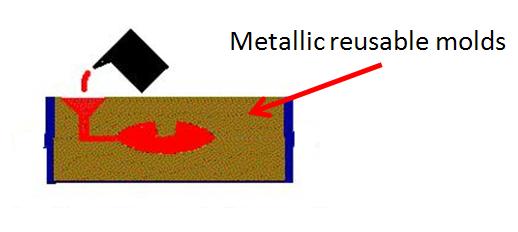In gravity die casting process, reusable metallic molds are used for creating the mold cavity where molten metal are poured without applying any force or pressure other than gravity. A silicate based coating is sprayed over the inner surface of the mold cavity before pouring the molten metal.

Level of surface finish achieved: 3.2-0.40 micro meters
Advantages:
– Good surface finish compare
– Low cost setup
– Waste can be recycled
– Quick cycle time
Disadvantages:
– Suitable for simple components
– Chances of defects are high
Ideal applications: Suitable for producing aluminum alloy and other similar light metal components. This process gives smoother surface than sand casting.
Hi, I am Shibashis, a blogger by passion and an engineer by profession. I have written most of the articles for mechGuru.com. For more than a decades i am closely associated with the engineering design/manufacturing simulation technologies. I am a self taught code hobbyist, presently in love with Python (Open CV / ML / Data Science /AWS -3000+ lines, 400+ hrs. )

I had some difficulty viewing the site in Safari on the Mac, but I still loved the site
Good article keep it up and thanks share with us
we manufactures
Gravity Die castings
Compared to gravity casting, low pressure
casting offers following advantages: In air mass gravity die casting
manufactures, the metal at intervals the chamber is ironed through the riser
tube into the mould by pressure that works on the metal surface .This form of
mould filling is that the most significant distinction to gravity and tilt-able
casting. The method of mould filling yield fully controlled. This ends up in a low-turbulence or perhaps turbulence-free mould filling.